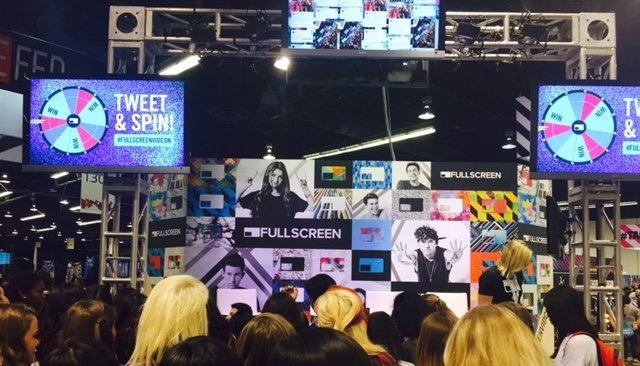
What makes selfies tick - tales from Vidcon
The past, present and future of online video
VidCon is no longer cool. I know this because I was there, and history tells me that the moment I show up, that's it for the whole “cool” thing.
The two things that strike you at Vidcon are the hordes of wide-eyed teens who are either hopeful YouTubers, or fans in search of selfie opportunities with major YouTube celebrities. The second is the increasing population of extraordinarily polished professional (multi) channel owners from FullScreen and Maker to NBC and Nickelodeon.
In this juxtaposition may be the past, present and future of YouTube and, for that matter online video in general.
YouTube's past IS a selfie. YouTubers create content for themselves. I point a camera at ME and because MY obsessions are YOUR obsessions and my issues are your issues, you relate, you watch, you share. If enough of you do, we have a mob scene and more or less ephemeral celebrity and the influence that comes from relatable and authentic voices.
YouTube's present is the organization and codification of YouTube's past, driven by the multi-channel networks, cross promotion of creators and the application of corporate muscle from Disney (Maker), Otter (Full Screen) and others including, of course, Google.
The MCN's and others are about more than selfie content. In many cases they are the new TV, breaking down barriers to entry, challenging the creative judgement of my generation and just maybe creating a content class that will combine reach, relevance, and authenticity at scale.
If that happens, the great tipping point in the distribution of advertising dollars may be nearer than many think. The challenge for many advertisers is how to pull off the magic trick of simultaneously ceding creative control AND maintaining the purpose and effectiveness of messaging. There's a new contract between consumers and brands -- the details of which have yet to be written but the creators, at least, will tell you, that brand messaging expressed in the authentic voice of the creator that the fan chooses to follow, is NOT automatically rejected. The implication is that there is a home for advertisers n=but not necessarily for advertising.
In terms of the under 30 video audience, there's a possibility that the race has already been won but the prize has yet to be awarded. The wider question is what happens next? As the YouTube generation ages, will they migrate to long form and 'corporately' created content and the traditional view of celebrity? Maybe they will. But if they don't, an age that started with the studio system almost a century ago may finally be over.
@robnorman
A version of this piece is also published on mediavillage.com
Integrated Marketing Professional
8yThis post is so spot on. As someone who works with influencers on a daily basis, it has been a challenge, especially with YouTube content, to find that fine balance.
Charles T Sebesta
8yInteresting
Dr. Turi MDUS at Starthemes Publications LLC - World famous astrologer, consultant of the rich and famous, Renown UFO's Speaker
8yTime to wake up to God cosmic Divinity, check my predictions and anticipate the news...https://www.facebook.com/AlienDr.Turi
Corporate Sales and PR
8yVery nice post Rob as usual. I differ in your opinion that you attended Vidcon so it is no longer cool. Great use of the Youtubers as selfies. Brands have to realize that they are no longer in control. Genuine fans are far more creative than agencies and more authentic. Brands have tried to buy influencers and that's the paradox, right there. How can you buy influence? You can't, you can rent it like you can rent love but you can't buy it. influence is that only -love and passion of the fan for the brand and the love and passion of the fan's followers for the content they produce. The only way forward is to create ideas that influencers will seek to be a part of. That will mean surrendering control. Brands need to be like the parents dealing with teens, the teens being the fans and content creators. You don't understand them but you trust and hope they are responsible enough to know what they're doing. You can only guide them, advise them and then sit back and watch.